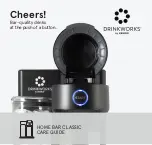
2
DKRCI.PI.FN1.A5.ML / 520H6262
© Danfoss | DCS (MWA) | 2015.05
ENGLISH
Refrigerants
Applicable to HCFC, HFC, R717 (Ammonia),
R744 (CO
2
) and all flammable refrigerants.
The strainer is only recommended for use
in closed circuits. For further information
please contact your local Danfoss sales
office.
Pressure and temperature range
–60/+150°C (–76/+302°F)
FIA 15-200:
The strainers are designed for a max.
working pressure of 52 bar (754 psi g)
Installation
Note:
At delivery the strainer housing is
not equipped with strainer insert
or accessories
The strainer must be installed with the top
cover downwards, and the flow must be
directed towards the top cover as indicated
by the arrow on the strainer housing (fig.
1). The strainer insert must be inserted
after welding.
The strainer housing is designed to
withstand a high internal pressure.
However, the piping system should be
designed to avoid liquid traps and reduce
the risk of hydraulic pressure caused by
thermal expansion. It must be ensured
that the strainer is protected from pressure
transients like “liquid hammer” in the
system.
Recommended flow direction
The strainer must be installed with the flow
towards the top cover as indicated by the
arrow on the side of the valve body (fig.
1). Flow in the opposite direction is not
acceptable.
Welding
The top cover should be removed before
welding (fig. 2) to prevent damage to the
gasket between the strainer housing and
top cover. Only materials and welding
methods compatible with the valve
housing material, must be applied to the
valve housing.
Clean the strainer housing internally to
remove welding debris at completion
of welding and before the strainer is
reassembled.
Removing the top cover can be omitted
provided that:
The temperature in the area between the
strainer housing and top cover during
welding does not 150°C/+302°F.
This temperature depends on the welding
method as well as on any cooling of the
strainer housing during the welding itself.
(Cooling can be ensured by, for example,
wrapping a wet cloth around the filter
body). Make sure that no dirt, welding
debris etc. get into the strainer during the
welding procedure.
The strainer housing must be free from
stresses (external loads) after installation.
Strainers must not be mounted in systems
where the outlet side of the strainer is
open to atmosphere. The outlet side of the
strainer must always be connected to the
system or properly capped off, for example
with a welded-on end plate.
Assembly
Remove welding debris and any dirt
from pipes and strainer housing before
assembly. Check that the strainer insert
has the right size before it is inserted in
the top cover and check that the gasket is
undamaged.
Place the strainer insert (pos. D) from
underneath. The insert has a slight force fit
into the housing, no gaskets or O-rings are
used.
If magnet inserts have been chosen as
accessory, fit those on the top cover before
replacing the cover.
Tightening
Tighten the top cover with a torque
wrench, to the values indicated in the table
(fig. 3).
Please note that the table (fig. 3)
containing maximum torque must be
adhered to and never exceeded.
If the drain valve has been chosen as
accessory, the drain plug should be
replaced by the drain valve.
Colours and identification
The FIA strainers are painted with a
red oxide primer in the factory. Precise
identification of the strainer is made via
the ID plate on the top cover, as well as by
the stamping on the strainer housing. The
external surface of the strainer housing
must be prevented against corrosion
with a suitable protective coating after
installation and assembly.
Be sure to protect the ID plate when
repainting the strainer.
Maintenance
Mounting of accessory:
Filter bag (fig. 4)
A 50µ filter bag (pos. E), especially for
commissioning of the plant, can replace
the normal strainer insert.
Mount the filter bag (held in place by the
filter holder) and be sure to place the filter
bag correctly in the strainer as shown in
fig. 4.
The flow must go into the filter bag cavity
and out or else the bag will not function
properly.
Dismantling the strainer (fig. 3)
Before servicing the strainer, isolate it from
the system and remove all refrigerant by
evacuation to zero pressure. Check for
refrigerant pressure before unscrewing and
removal of the top cover.
The strainer insert must be removed
without any use of tools
Cleaning
Clean the strainer insert using an
appropriate solvent by flushing and
brushing. The use of strong acids cannot
be recommended. The strainer insert must
be wiped or blown dry before inspection.
If the insert is damaged or the sediments
cannot be removed, the strainer insert
must be replaced.
Assembly
Remove any dirt from the housing before
the strainer is assembled.
Replacement of gasket
Change the gasket for the top cover (pos.
C) and drain plug.
Check that the strainer insert is correctly
placed before remounting the top cover
and bolts (pos. A).
Tightening (fig. 3)
Tighten the top cover bolts (pos. A) with
a torque wrench according to the table in
fig. 3
Use only original Danfoss parts (including
gaskets) for replacement. Materials of
new parts are certified for the relevant
refrigerant.
In cases of doubt, please contact your local
Danfoss sales office.






























